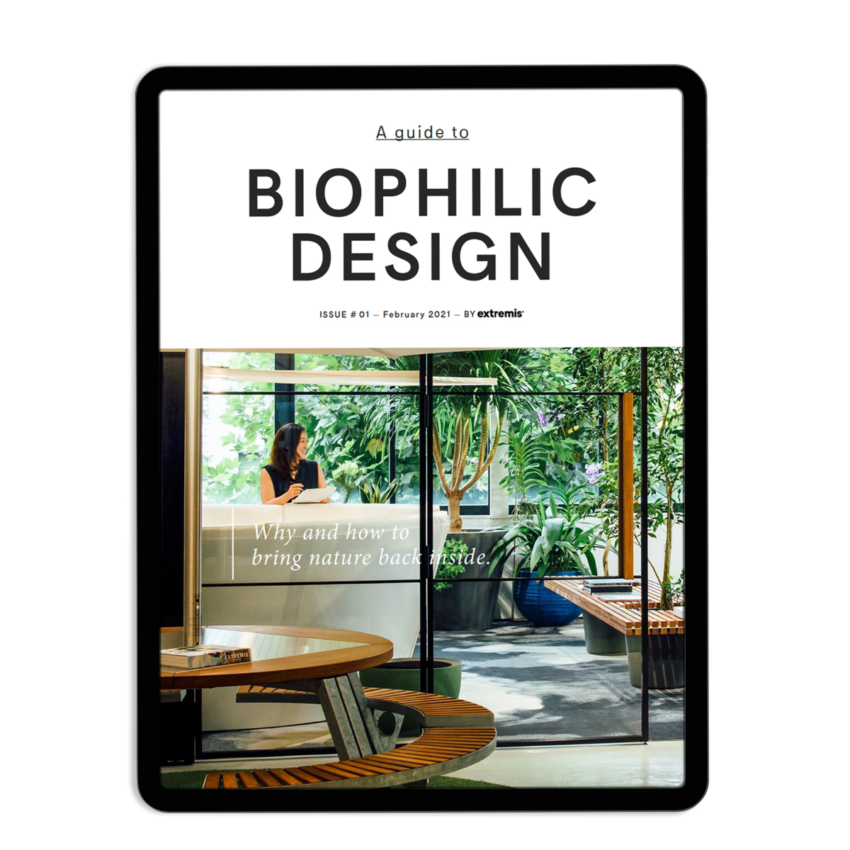Did you know that incorporating natural elements into our buildings can boost productivity by up to 15%? Biophilic design isn’t just a trend; it’s a powerful way to connect with nature while improving your daily environment. Imagine living and working in spaces where sunlight, greenery, and natural materials harmonize to enhance everything from air quality to mental health. Let biophilic design transform your world by creating spaces that echo nature’s calming rhythm.
Think about your office or home—could it use a breath of fresh air? Nature-inspired windows can flood your space with natural light, while indoor gardens and living walls bring the outdoors in. In biophilic architecture, every element works to build a seamless indoor-outdoor connection. You experience a comforting blend of eco-friendly materials, natural ventilation, and soothing colors, all designed to boost your well-being and reduce stress.
Ready to dive deeper into how these natural features can enhance your life? Discover the incredible benefits of biophilic spaces and how they can positively impact your physical and mental health. Explore the world of biophilia and uncover how it can be your gateway to a more balanced, harmonious lifestyle.

Photo provided by Scott Webb on Pexels
Throughout the article
Understanding Biophilic Design
Core Principles
When you think about biophilic design, think of bringing the outdoors inside. It’s all about how natural elements enhance indoor spaces. This means adding things like plants, sunlight, and even water features to your space. You want to embrace nature in every part of your home or office. Add plants on your table or hang nature-inspired artwork on the walls. It’s about creating a space where you feel connected to the natural world, even when you are indoors.
Biophilic Architecture
Biophilic design isn’t just about decorating. It’s also about structure. Biophilic architecture creates harmony between the building and nature. Think of houses that have large windows to let in natural light or balconies with greenery. You want to see nature from your window or feel the breeze when you open a door. This is what biophilic architecture aims to do. It’s all about creating buildings that feel like they belong with the natural environment.

Photo provided by Snow White on Pexels
Key Elements of Biophilic Design
Nature-Inspired Windows
Consider adding Nature-Inspired Windows to your home. These windows are not just for letting light in. They are for maximizing your view. When you look outside, you should see trees, plants, or a garden. Nature-inspired windows are designed to frame the beautiful outdoor scenery. They bring the natural landscape into your living room or bedroom.
Natural Light Integration
Natural light is essential for a good biophilic design. When you integrate natural light, you enhance the warmth and ambiance of your space. Think about using light curtains or blinds that allow sunlight to filter through. This keeps the room bright and welcoming during the day. You will notice how the space feels livelier. Plus, it’s a great way to cut down on electric lights.
Indoor-Outdoor Connection
Creating an indoor-outdoor connection is important. You want your indoor spaces to blend seamlessly with the outdoors. This can be done by using sliding doors that open to a patio or a garden. Having an easy flow between spaces makes you feel more at ease. It allows you to step outside easily and enjoy the fresh air and sunshine.
Living Walls
Living walls make a striking feature in any room. These walls are covered with real plants, adding greenery and depth to your room. They not only look beautiful but also help clean the air. Imagine a wall full of lush plants that catch your eye every time you walk by. It’s a simple yet effective way to bring nature inside.

Photo provided by Mike van Schoonderwalt on Pexels
Benefits and Implementation
Sustainable Design Choices
When choosing materials for your home, consider eco-friendly options carefully. Sustainable design choices are key in biophilic design. You can opt for bamboo floors or reclaimed wood furniture. These choices not only look great but also support the environment. By choosing sustainable materials, you are being kind to the planet.
Biophilic Benefits
There are many benefits to biophilic design. By incorporating nature into your space, you can improve your well-being and productivity. Workers in biophilic spaces often feel more creative and less stressed. Imagine working in a place surrounded by plants or natural light. It instantly makes you feel better and boosts your mood.
Green Building Materials
Using green building materials supports sustainability. These materials include things like recycled glass or metal. They help reduce waste and promote a cleaner environment. By using them, you are contributing to a greener planet. Next time you plan a renovation, think about the materials you are using. Choosing the right materials can make a big difference.
Embrace the Power of Nature
Connecting with nature brings many benefits to your life. It can boost your mood, enhance your well-being, and improve air quality in your space. You can enjoy a more peaceful and productive environment that feels like a breath of fresh air. By bringing elements like natural light and greenery indoors, you can transform your living space into a haven of tranquility.
Start small with a simple step. Consider adding a few houseplants or opening your windows to let more sunlight in. You might also explore eco-friendly materials for future home projects. These changes improve your space and create a healthier living environment for you and your family. Remember, every little bit of nature can make a big difference.
Why not begin today? Take a moment to look around your space and think about what nature-inspired changes you can make. You have the power to create a space that nurtures both your mind and body. Embrace nature’s touch and watch your surroundings transform into a place of harmony and comfort.
